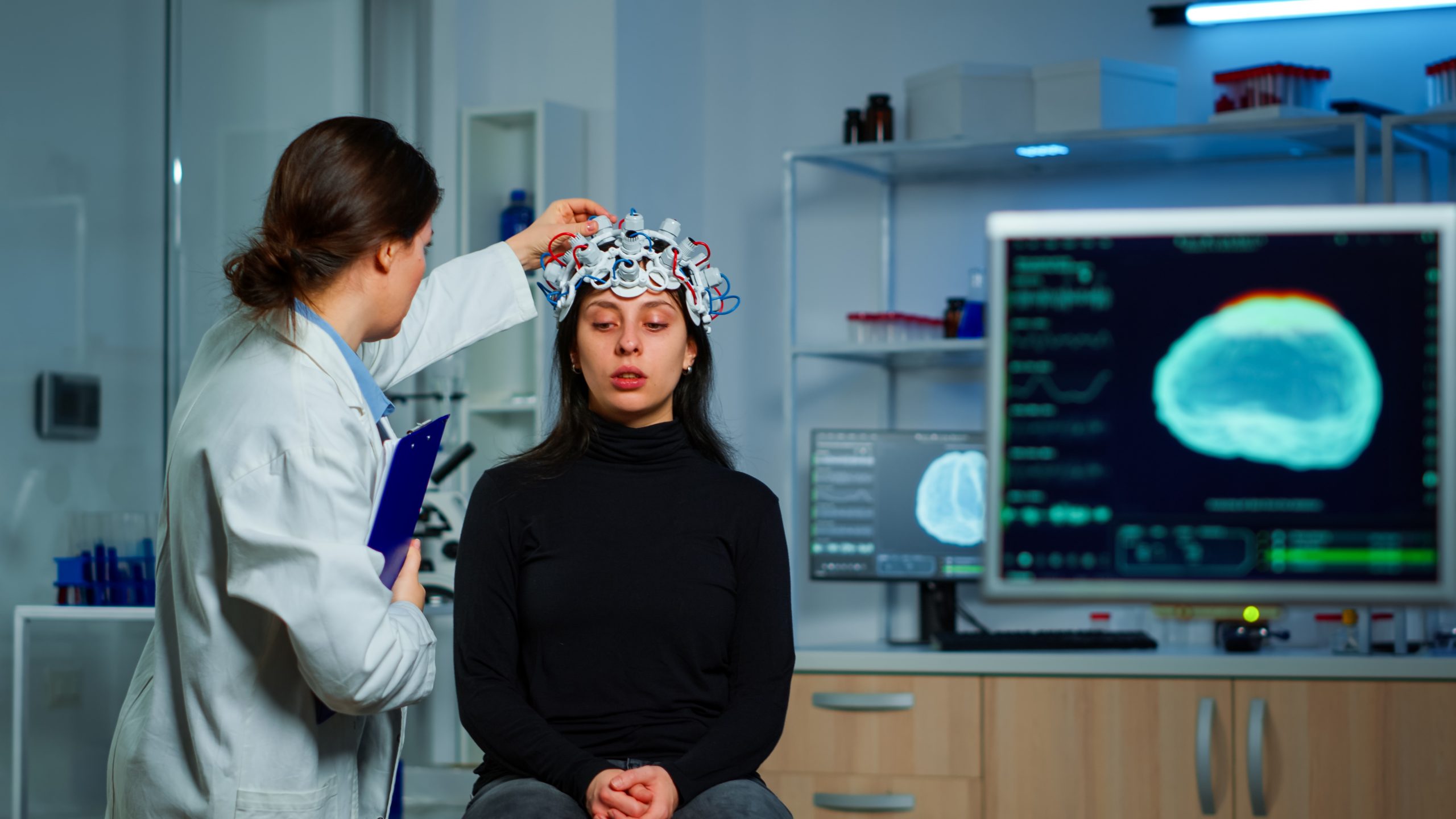

In recent years, research on traumatic brain injury has proliferated, from the football field to the battlefield. Modeling the mechanical forces that compress, strain, and twist the brain tissue and cause harm that can be temporary or fatal is essential to understanding brain injury.
Stanford University researchers claim to have used artificial intelligence to create a model of how brain deformations translate into stresses. They believe their method may help explain why and when concussions sometimes result in permanent brain damage while other times they do not.
“The problem in brain modeling to date is that the brain is not a homogeneous tissue—it’s not the same in every part of the brain. Yet, trauma is often pervasive,” said Ellen Kuhl, professor of mechanical engineering, director of the Living Matter Lab, and senior author of a new study appearing in the journal Acta Biomaterialia. “The brain is also ultrasoft, much like Jell-O, which makes both testing and modeling physical effects on the brain very challenging.”
Going to the library
Researchers who want to study brain trauma are forced to select from a library of dozens of material models, some dating back almost a century, to help calculate the stresses on the brain.
For decades, scientists have developed these models for soft materials with inscrutable names like the “neo-Hookean Model for Plastics and Rubber,” the “Demiray Model for Soft Tissues,” and the “Ogden Model for Rubber-like Solids.” But a model that works for a certain type of stress—tension, compression, or shear—may not work for another. Similarly, a model that might work for one region of the brain might not work for another.
The new approach takes a model-of-models tack, using artificial intelligence to discover which model, out of more than 4,000 possibilities, best explains the behavior of the brain. In the past, selecting the best model was a hit-or-miss process that depended largely on user experience and personal preference.
“We take user selection out of the equation by allowing machine learning to examine the data and decide which model works best,” adds Sarah St. Pierre, a doctoral scholar in Kuhl’s lab and a co-author of the paper. “Automating this process lowers barriers to model the brain. Now, every Stanford student can do this.” Once machine learning has discovered the best model, it’s easy to relate it back to the models that generations of researchers have proposed.
Transformative insights
The approach, known as a Constitutive Artificial Neural Networks, was developed by Kevin Linka before he joined the Living Matter Lab as a postdoc to apply his method to the brain.
“We provide the network with all existing constitutive models developed over the last century. And the AI does a mix-and-match to find the best option. This is impossible to do by hand,” Linka said. “Now, we’ve effectively discovered a new model that makes us more confident in studying the mechanical stress in the brain.”
Constitutive Artificial Neural Networks, in contrast to traditional off-the-shelf neural networks, offer fresh perspectives on the physics of the brain. The team cites as just one illustration how they have precisely measured physically significant factors like variable shear stiffnesses in the cortex, basal ganglia, corona radiata, and corpus callosum at precisely 1.82, 0.88, 0.94, and 0.54 kilopascals respectively.
The force from a blow to the head, for example, and the ensuing deformation of the brain tissue are related by the shear modulus. By these standards, the corpus callosum, the network of nerves that connects the two hemispheres of the brain, is more than three times as stiff as the cortex, the grey, outer layer of the brain.
Researchers studying brain damage now have better expertise to recreate and comprehend the origins of brain injury. This may serve as motivation for developing additional safeguards or curative procedures. Kuhl’s team has worked with Dassault Systemès Simulia, a leading provider of simulation software, to integrate automated model discovery right into their analysis workflow in order to apply this knowledge to engineering practice.
“What’s really most exciting about this research,” Kuhl said, “is that Constitutive Artificial Neural Networks could induce a paradigm shift in soft tissue modeling, from user-defined model selection to automated model discovery. This could forever change how we simulate materials and structures.”
more recommended stories
 Phage Therapy Study Reveals RNA-Based Infection Control
Phage Therapy Study Reveals RNA-Based Infection ControlKey Takeaways (Quick Summary) Researchers uncovered.
 Safer Allogeneic Stem Cell Transplants with Treg Therapy
Safer Allogeneic Stem Cell Transplants with Treg TherapyA new preclinical study from the.
 AI in Emergency Medicine and Clinician Decision Accuracy
AI in Emergency Medicine and Clinician Decision AccuracyEmergency teams rely on rapid, accurate.
 Innovative AI Boosts Epilepsy Seizure Prediction by 44%
Innovative AI Boosts Epilepsy Seizure Prediction by 44%Transforming Seizure Prediction in Epilepsy Seizure.
 Hypnosis Boosts NIV Tolerance in Respiratory Failure
Hypnosis Boosts NIV Tolerance in Respiratory FailureA New Approach: Hypnosis Improves NIV.
 Bee-Sting Microneedle Patch for Painless Drug Delivery
Bee-Sting Microneedle Patch for Painless Drug DeliveryMicroneedle Patch: A Pain-Free Alternative for.
 AI Reshapes Anticoagulation in Atrial Fibrillation Care
AI Reshapes Anticoagulation in Atrial Fibrillation CareUnderstanding the Challenge of Atrial Fibrillation.
 Hemoglobin as Brain Antioxidant in Neurodegenerative Disease
Hemoglobin as Brain Antioxidant in Neurodegenerative DiseaseUncovering the Brain’s Own Defense Against.
 Global Data Resource for Progressive MS Research (Multiple Sclerosis)
Global Data Resource for Progressive MS Research (Multiple Sclerosis)The International Progressive MS Alliance has.
 AI Diabetes Risk Detection: Early T2D Prediction
AI Diabetes Risk Detection: Early T2D PredictionA new frontier in early diabetes.

Leave a Comment